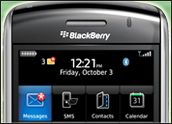
Kathleen Gilroy, cofounder of Swift Media Networks in Boston, eats, lives and breathes Web 2.0. Not only is her latest business venture focused on Web 2.0 services for conferences, but she’s also used just about every Web-based tool there is to run her own various startups. With five full-time staff members, she has become a well-seasoned user of blogs, wikis, collaboration tools and just about any other free or low-cost service she can leverage.
“What’s interesting about Web 2.0 is that it gives you access to markets [a small-business owner] couldn’t normally reach,” Gilroy told the E-Commerce Times.
Right now, her application “portfolio” includes:
- A wiki to coordinate efforts between programmers in Boston, Idaho and the Ukraine;
- Basecamp, a Web-based project management tools (approximate fee: US$40 a month);
- Highrise to track contacts and activities (much like a small business version of Salesforce.com); and
- A raft of Google tools (e.g. Google Docs spreadsheets, Google Notebook for blogging, Google AdWords for keyword searches, etc.).
On occasion she even touches base with cohorts through Facebook and LinkedIn ; and she’s a fan of the likes of Twitter microblogging and del.icio.us social bookmarking service.
Blogs for Dogs
Gilroy has also applied her Web 2.0 thinking to help out a friend whose dog breeding business was languishing when some more tech savvy competitors made their names known. All it took was setting up a blog and registering the right keywords with Google AdWords, and business was soon booming again for Donna Jasper of Nite Winds Kennels in Geneva, Wis.
“In the 17 years I’ve been breeding dogs, I’ve never been as far as I am now [with my business] since building the blog site,” Jasper told the E-Commerce Times. “Now I’ve got waiting lists for puppies. In fact, as soon as the blog was up I started getting calls.”
The cost of all this newfound fame and fortune is about $20 a month for the keyword search and $100 a year for running the blog (including the domain name).
The tactic, according to Gilroy, was not about simply setting up a blog on a whim. “Any small-business owner can use a blog as an online marketing tool, but it’s more effective to combine it with Google AdWords to drive traffic. A lot of professionals such as massage therapists and restaurateurs are also combining Google AdWords with online scheduling services and seeing an enormous increase in revenues.”
It pays to be specific. “It’s easy to start a blog, but it’s another to create an environment that’s engaging enough to be an impactful part of your business,” confirmed Bill Rielly, SMB Marketing Director for Microsoft. “Your [efforts] must be driven by core business needs and tightly aligning them with specific tactics.”
Little Fish in a Big Pond
Web 2.0, according to Rielly, has actually put small businesses at a decided advantage when it comes to reaching out and touching potential customers. “They’ve taken the driver’s seat by becoming the early adopters,” he told the E-Commerce Times. “That’s because Web 2.0 enables them to achieve a scale at an affordable price, which was never possible before.”
Microsoft Office Live Small Business tools launched this past February, for example, enable companies to get on the Web; generate branded e-mails; execute e-mail campaigns; create blogs, wikis and discussion forums; and market over the Internet through banner ads. Basic services are free of charge.
Keeping Your Eye on the Prize
However, with a potential market of millions of consumers, the key to any Web 2.0 outreach is getting a handle on your goals and your real audience. There are some additional types of on-demand Web-based services that can help small businesses capitalize on the power of word-of-mouth referrals.
If influential blogs in your particular market are where you want to invest your limited marketing dollars, services like San Francisco-based BuzzLogic can help find the right influencers in the blogosphere for targeted outreach or advertising campaigns. As CEO Rob Crumpler explained, “If you can identify and reach out to influencers on a one-on-one basis, it can be very fruitful. With 100 million consumers actively reaching blogs, businesses need to know the right place to get to the right audience with the right message at the right time.”
When targeting the blogosphere, he recommends that business first define their topic areas of interest and identify the key influencers in those areas. The next step is to understand the audiences. “Once you’ve done your flight planning, then you can start doing outreach,” Crumpler told the E-Commerce Times.
Daniel Riveong, head of Search Marketing Services for e-Storm International in San Francisco, an interactive marketing and advertising agency, often uses BuzzLogic when working with his customers. “There are a gazillion sites out there, so you need to find your audience. For a small business where you have to wear many hats, it’s helpful to have a way to find the major influencers and prioritize your marketing. It helps you gauge what people are talking about, who is talking and what you need to watch out for.” Riveong also likes to check out del.icio.us on a regular basis to track the most talked-about and saved articles on specific subject areas. He also uses CentralDesktop, a Web-based collaboration service, for managing projects.
Being There
For a small business with a good handle on its target audience, virtual worlds like There.com offer a unique alternative for getting the word out on new merchandise — without paying big marketing dollars or production costs. This virtual world allows companies to offer branded products for avatars for a nominal fee. With more that 1 million members, it’s a prime spot for both established and up-and-coming merchandisers to showcase their design concepts.
“Virtual merchandise just gives you a different way to connect with [consumers] and pilot new merchandise without having to go to the expense of making real goods,” Michael Wilson, CEO of Makena Technologies in Laguna Beach, Calif., parent company of There.com, told the E-Commerce Times.
For NaCo USA in Miami, There.com was the perfect social networking venue to promote its line of t-shirts from Mexico to the Hispanic youth population. “In the true smal-business fashion, we don’t have funds we wanted to reach our demographic, so we have to look to non-traditional media channels,” Dean Schwartz, president and CEO of NaCo USA, told the E-Commerce Times. “We saw There.com as a very interesting social test to see what kind of reaction we would get to our new designs. And over two years, we’d only have to sell 20 to 30 t-shirts for the investment to pay for itself. We’ve definitely hit that number already.”
A Brave New World
Whatever the market of choice, at the heart of Web 2.0 is the fact that it helps companies build communities, John Kembel, CEO HiveLive in Boulder, Colo., an on-demand platform for building online communities, told the E-Commerce Times. “You can tap into customers. You can compete and innovate efficiently and effectively. You can integrate blogs, forums, wikis and RSS (really simple syndication) feeds to support activities that are unique to your products and ideas.”
Even at this point, small businesses have barely scratched the surface of Web 2.0 has to offer, Microsoft’s Rielly said. “Delivery cycles are getting short, and we’re seeing a lot more compelling tools and content [for small business]. That’s the exciting part. We’re only in the first innings in terms of small businesses engaging in this stuff.”












































Like so many tech articles posted since Tim O’Reilly coined the term in 2004, this one references "Web 2.0" as if it were something tangible–or at least a concept with clear, concise definition. It is not. In 2006, Web founder Sir Tim Berners-Lee sagely observed that "nobody knows what it means":
http://tinyurl.com/y6ewzy
In 2007, Michael Wesch put together this video that supposedly "explains what Web 2.0 really is about":
http://tinyurl.com/6pdz2q
It is a cool video. But the message is all about XML and how it can be used to separate form and content. There was no mention of CSS and XHTML, but no matter. I was writing XML parsers in the ’90s, and XHTML/CSS web design pre-dates "Web 2.0" as well.
And now in 2008, the most honest thing we can say is that "Web 2.0" means whatever the techno-marketeer (ab)using it wants it to mean. Otherwise, why would intelligent people like Isaac O’Bannon still be writing articles asking "What is Web 2.0?":
http://tinyurl.com/5solok
And, why would McKinsey’s just-released best-of-breed report entitled "Building the Web 2.0 Enterprise" …
http://tinyurl.com/6sxls7
… include no attempt at defining the term other than to list the "Web 2.0 Tools" that comprise or enable it? And even there, the chief ingredient is identified only as "Web Services", adding more mystery to the mix as one ethereal term is offered up to explain another.
As originated in an Onstartups.com website design posting…
http://tinyurl.com/576sgs
… "Web 2.0" is like pornography: Nobody has defined it, but you know it when you see it.
Bruce Arnold, Web Design Miami Florida
http://www.PervasivePersuasion.com